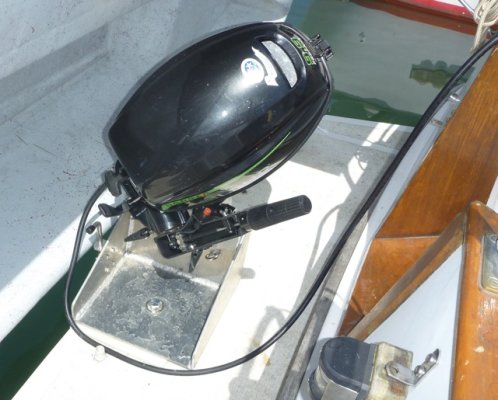I have always felt that the best "take home" system is using the main prop and shaft with some form of power belted to the shaft. A small outboard propeller (or even a small, inboard take-home system with small propeller) will not work as well as the main prop, HP for HP.
If starting from scratch, I'd have a pair of equal generators, each fitted with a hydraulic pump and leading to the hydraulic motor belted to the shaft. The reasoning for the pair of generators is that one cycles them on/off, each a day at a time, decreasing each's hours when living on the hook. For take home, you double the power available to the motor. Of course, if retrofitting, then using what you have works, too.
If you'd like an electric solution (which can have other payoffs), then again, a motor belted to the main shaft. With the right electronics, this motor can act as a generator while underway, saving hours on your main generator. Most likely, this motor will be no less than 48v DC. So you will also need a 48v battery bank along with a way to charge this battery. If starting from scratch, you can install a 48v variable-speed generator to charge the battery and to run the take home motor. DC/DC converters supply your 24v & 12v needs - the inverter(s), your 120VAC & 240VAC needs.
I'd suggest no less than 6 kW motor. This is 8 HP, but a really GOOD 8 HP full of torque. My guess is you'll get 4 knots in calm seas and the same maneuverability for when you do get home. Obviously, your generator should be at least 6 kW or more for sustained motoring.
The Torqeedo 4 kW OB uses a 48v battery and may have enough oomph to steer and get you home. You still need th battery and the way to create the electricity, either with a 120VAC/48v DC charger or 48v generator.
If you go electric, most likely you will make your ships service battery 48v. And, if it's in the budget, go LiFePo for the battery. If not, you do need AGM to handle the flow of current through the battery from genset to motor.
Outback makes good 48v/120VAC inverter/chargers - 100A charger (about 5kW?).



